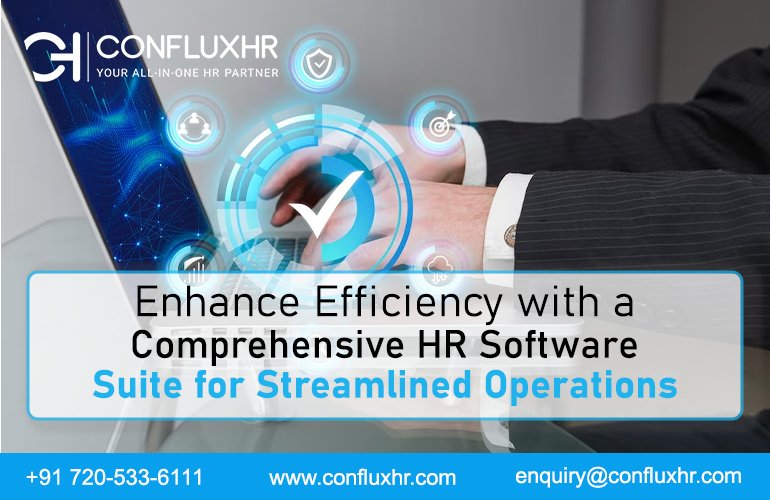Effective employee onboarding is crucial for organizations to set their new hires up for success. With the advancement of technology, utilizing a Human Resource Management System (HRMS) has become increasingly popular in streamlining and enhancing the onboarding process.
This blog will explore the benefits, strategies, and best practices of using an HRMS to improve employee onboarding and create a positive new hire experience.
Streamlining Onboarding Processes
One of the key benefits of using an HRMS for employee onboarding is the ability to streamline and automate various processes.
By leveraging the capabilities of an HRMS, organizations can:
- Automate paperwork and documentation: Traditional onboarding processes often involve significant paperwork. With an HRMS, new hires can complete necessary forms and documentation online. It is important to eliminate the need for manual paperwork and reducing administrative burdens.
- Centralize onboarding tasks and information: An HRMS provides a centralized platform where HR professionals can manage and track all onboarding tasks and information. This ensures all necessary steps are completed and new hires can access essential resources and materials.
- Set up task reminders and notifications: An HRMS can send automated reminders and notifications to new hires and relevant stakeholders. Everyone must stay informed and on track throughout the onboarding process.
Enhancing Communication and Engagement
An HRMS can significantly improve communication and engagement during the employee onboarding period. Here’s how:
- Provide access to company policies and resources: With an HRMS, new hires can easily access essential company policies, employee handbooks, and other resources. This allows them to familiarize themselves with the organization’s culture, values, and expectations.
- Facilitate communication between new hires and HR or managers: An HRMS enables seamless communication between new hires, HR professionals, and managers. Through the system, new hires can ask questions, seek guidance, and receive timely responses. This will foster a sense of support and inclusion.
- Offer interactive onboarding modules or training materials: An HRMS can host interactive onboarding modules or training materials that new hires can complete at their own pace. This interactive approach enhances engagement and knowledge retention.
Improving Efficiency and Time-to-Productivity
Using an HRMS for employee onboarding can significantly improve efficiency. It also reduces the time it takes for new hires to become productive.
Consider the following:
- Prepare new hires in advance with pre-boarding activities: An HRMS allows organizations to engage new hires even before their official start date. Pre-boarding activities, such as providing access to necessary resources and introductory materials, can help new hires hit the ground running.
- Accelerate the completion of necessary forms and processes: By digitizing and automating the onboarding process, an HRMS eliminates time-consuming manual tasks ,. Leading to accelerated completion of necessary forms and processes.
- Assign and track training programs or learning modules: An HRMS can assign specific training programs or learning modules to new hires, enabling them to acquire essential skills and knowledge efficiently. The system can track their progress and completion, ensuring no training requirements are overlooked.
Personalizing the Onboarding Experience
Personalization is critical to creating a positive and engaging onboarding experience.
An HRMS facilitates personalization in the following ways:
- Tailor onboarding plans to individual roles and departments: With an HRMS, organizations can create customized onboarding plans. A plan that aligns with the requirements and responsibilities of each new hire’s role and department.
- Assign mentors or buddies for guidance and support: An HRMS can facilitate mentorship programs or assign buddies to new hires. New hires should be given proper knowledge transfer. Also, providing them with dedicated support and guidance throughout onboarding should be the number one priority for the HR.
- Collect feedback to improve the onboarding process continuously: Organizations can collect feedback from new hires about their onboarding experience through an HRMS. This feedback can be used to identify areas for improvement and make necessary adjustments to enhance future onboarding processes.
Ensuring Compliance and Legal Requirements
Compliance with legal requirements is critical during the onboarding process. An HRMS can help organizations ensure compliance in the following ways:
- Streamline the collection of necessary legal documents and certifications: An HRMS simplifies the collection and management of essential legal documents and certifications. This helps in ensuring that new hires provide all necessary information for employment.
- Automate compliance training and policy acknowledgments: Compliance training and policy acknowledgments can be automated through an HRMS. It is critical to ensure that new hires receive and acknowledge important information. Information related to company policies, procedures, and legal requirements will bring much clarity into the minds of the employee.
- Monitor and document compliance with labor laws and regulations: An HRMS can assist in monitoring and documenting compliance with labor laws and regulations . It provides organizations with an audit trail and evidence of compliance efforts.
Conclusion
Implementing an HRMS for employee onboarding benefits organizations, enhancing the new hire experience, and setting the stage for long-term success. By streamlining processes, improving communication and engagement, enhancing efficiency, personalizing the onboarding journey, and ensuring compliance, organizations can create a positive and efficient onboarding experience. Leveraging the capabilities of an HRMS allows organizations to optimize the onboarding process. This in turn improves employee satisfaction, and drive overall organizational success.



